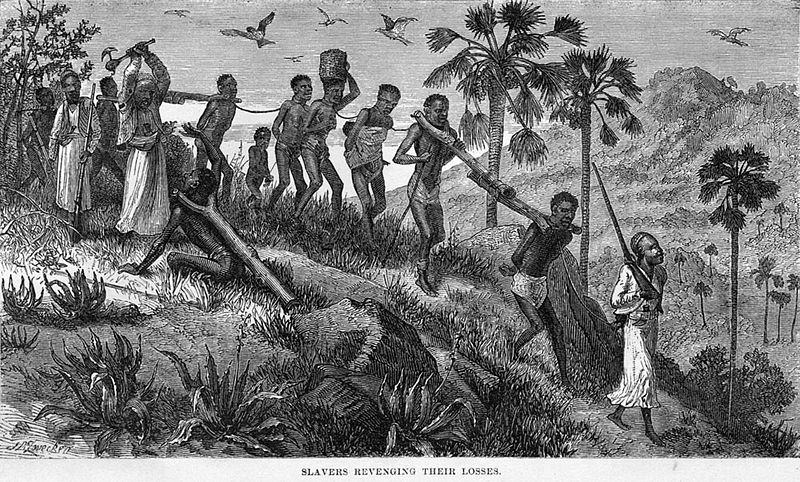فائل:Slaves ruvuma.jpg

ایس وکھالے دا ناپ: ۸۰۰ × ۴۸۲ پکسلز۔ دوجے ریزولوشنز: ۳۲۰ × ۱۹۳ پکسلز | ۶۴۰ × ۳۸۵ پکسلز | ۱,۰۰۰ × ۶۰۲ پکسلز ۔
اصل فائل (۱,۰۰۰ × ۶۰۲ پکسلز, فائل حجم: ۲۸۶ کلوبائٹ, MIME type: image/jpeg)
فائل دی تریخ
فائل نو اس ویلے دی حالت وچ ویکھن واسطے تاریخ/ویلے تے کلک کرو۔
| تریخ تے ویلہ | نکی مورت | پاسے | ورتن والا | تیپّݨی کرو | |
|---|---|---|---|---|---|
| موجودہ | ۰۷:۳۶, ۶ اپریل ۲۰۱۳ |  | ۱,۰۰۰ × ۶۰۲ (۲۸۶ کلوبائٹ) | Underlying lk | larger file |
| ۲۱:۳۶, ۱۴ مارچ ۲۰۰۷ |  | ۳۲۹ × ۱۷۸ (۲۳ کلوبائٹ) | Béka~commonswiki | {{Information |Description=Arab slave traders and their captives along the Ruvuma (Rovuma) river (in today's Tanzania and Mozambique) |Source=http://www.frontline.org.za/news/making_disciples_nations.htm; also in various non-Internet publications |Date=18 |
فائل دی ورتوں
تھلے دتے گئے 1 صفحے اس فائل نال جُڑدے نیں
فائل ویاپک ورتوں
ایہہ دوجے وکیاں ایس فائل نوں ورتدے نیں –
- af.wikipedia.org تے ورتوں
- ar.wikipedia.org تے ورتوں
- arz.wikipedia.org تے ورتوں
- ast.wikipedia.org تے ورتوں
- azb.wikipedia.org تے ورتوں
- be.wikipedia.org تے ورتوں
- bn.wikipedia.org تے ورتوں
- bs.wikipedia.org تے ورتوں
- ca.wikipedia.org تے ورتوں
- cs.wikipedia.org تے ورتوں
- de.wikipedia.org تے ورتوں
- diq.wikipedia.org تے ورتوں
- el.wikipedia.org تے ورتوں
- en.wikipedia.org تے ورتوں
- Mozambique
- Slavery
- Death march
- Economic history of Africa
- History of slavery
- Slavery in Africa
- Thomas Jefferson and slavery
- 19th century
- Brussels Anti-Slavery Conference 1889–90
- Portal:Pan-Africanism/Selected history
- Portal:Pan-Africanism/Selected history/4
- Indian Ocean slave trade
- User:Caesarz870/sandbox3
- Medieval and early modern Africa
- es.wikipedia.org تے ورتوں
- eu.wikipedia.org تے ورتوں
- fi.wikipedia.org تے ورتوں
- frr.wikipedia.org تے ورتوں
- fr.wikipedia.org تے ورتوں
- ga.wikipedia.org تے ورتوں
- gd.wikipedia.org تے ورتوں
- gl.wikipedia.org تے ورتوں
- ha.wikipedia.org تے ورتوں
- hy.wikipedia.org تے ورتوں
ایس فائل دا ویکھو ہور جگت ورتن .
